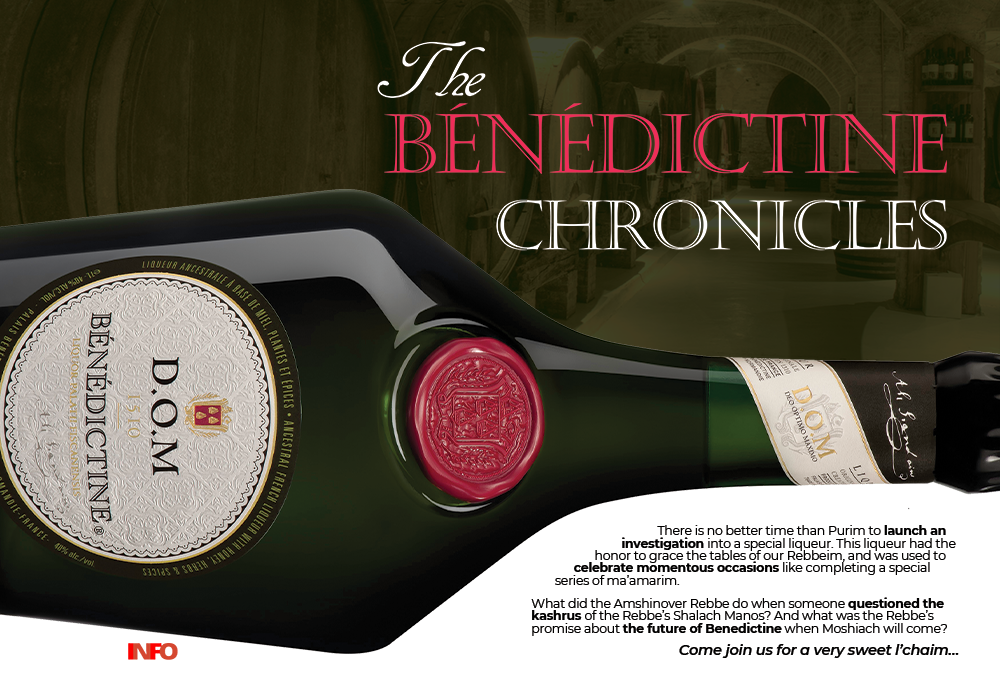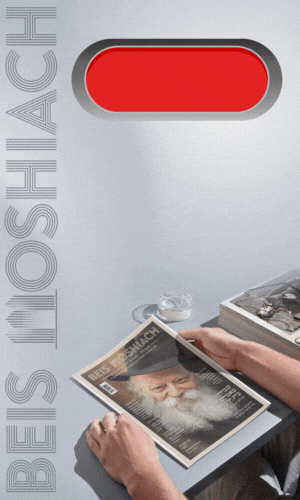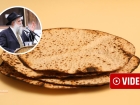The Benedictine Chronicles
There is no better time than Purim to launch an investigation into a special liqueur • What did the Amshinover Rebbe do when someone questioned the kashrus of the Rebbe’s Shalach Manos? And what was the Rebbe’s promise about the future of Benedictine when Moshiach will come? Come join us for a very sweet l’chaim…• By Beis Moshiach Magazine • Full Article
Menachem Ziegelbaum, Beis Moshiach
L’chaim! L’chaim v’livracha! The Rebbe’s pure eyes scan face after face, Chassid after Chassid, catching their eyes and souls among the thousands standing around and nodding. L’chaim v’livracha!
Then, suddenly, the Rebbe raises his hand toward someone and motions to him. The Chassidim know what that means, that he should say l’chaim over a cup. Not a small cup but a large cup.
From somewhere, a bottle of Benedictine appears, a cup is filled with the amber liquid. The Chassid lifts it and the Rebbe, who is waiting, nods with a pleased look, l’chaim v’livracha!
Every fledgling Chassid knows that a farbrengen without mashke is like a car without gas, like a flashlight without a battery, and like a bank account without money. The soul cannot open up without a cup or two of mashke and a deep niggun that prods the neshama, in order to open up and receive what the mashpiim say.
For many years, the mashke in the capital of Lubavitch, in 770, was Benedictine. It was the beverage of kings and was used exclusively. Later generations are familiar with Smirnoff, the clear liquid that is given out at farbrengens and even given out in miniature bottles by the Rebbe at kos shel bracha.
Not too many remember the Benedictine over which l’chaim was said, until due to a certain event it was removed from the table of kings.
What happened? First, say l’chaim. Without that, we cannot continue. L’chaim! L’chaim v’livracha!
THE BEGINNING OF THE (BENEDICTINE) STORY
And so, dear readers, the story of Benedictine takes us back three hundred years to the Renaissance and brings us to Fecamp in Normandy. There was a Benedictine monastery where monks lived a quiet life, removed from the world.
One of the monks, who apparently had time on his hands, managed to produce this beverage which later became a prized liqueur, comprised of a mixture of twenty-seven plants from various countries. The base of the liqueur is alcohol derived from sugar beets where the various plants are steeped like aloe, arnica, tea, lemon, thyme, orange peel, red berries, cinnamon and other herbs, until it acquires its special taste. Preparing this drink takes seven years, in the course of which it is fermented in oak barrels.
The liqueur became very popular and reached the court of the king, where it quickly became famous and continued to be produced by the Benedictine monks until the end of the eighteenth century.
Following the French Revolution, the recipe was lost and then one day, a middle-class book collector bought the book of records from the monastery where that monk had been, as well as many other bundles of books. He did not know what the book contained, nor the great treasure within. The book was in his private library for many years until his relative, Alexander Le Grand casually looked through the book and discovered the secret it contained. He immediately realized the potential in this old-new liqueur and decided to manufacture it. He called it Benedictine.
It’s a nice story but not authenticated. Some claim that Alexander Le Grand invented the entire story as a cover for his discovery, as he himself discovered and developed the recipe with the help of a local chemist.
One way or the other, by the year 5633/1873, the drink became popular and that year, about 150,000 bottles were manufactured. Alexander decided to form a company to market Benedictine and manufacture it. Nine years later, in 1882, he built a special palace for the manufacture of Benedictine where it continued to be manufactured till today.
The drink is often referred to as the “drink of kings” and it serves as a base for many cocktails.
Today, bottles of Benedictine are marketed with the red seal with the letters D.O.M., an acronym for the Latin “to G-d, most good, most great.”
Every Chassid knows that whatever Hashem made in the world, was made for the Jewish people, especially for Chassidim. If an anonymous monk invented such a fine mashke, it was only so that Chassidim would say l’chaim with it!
Before we go further in the story of the fine French liqueur that graced the Rebbe’s table, it’s time to pour another cup … four times are certainly permitted. L’chaim! L’chaim v’livracha!!
LUBAVITCH TRADITION
So, where were we? Ah, yes, from 1873 and on, the liqueur became the most widespread and popular. It somehow came to Lubavitch. That is the way of the finest liqueurs, they find their way to the finest places, and where is there a finer place than Lubavitch?
At a certain point, the Rebbe Rayatz told his son-in-law, later to be the Rebbe, that at the conclusion of the writing of the “parenthetic notes to 11 maamarim,” his father the Rebbe Rashab, asked him to bring Benedictine. Why Benedictine? Glad you asked. Because making l’chaim on quality beverages had already become a tradition. It turns out that this began with the Rebbe Rashab himself and his father, the Rebbe Maharash. Take note of this nice description that the Rebbe Rayatz provided in the winter of 5695:
The appended notes to the 11 maamarim (from) “Eileh Hadevarim” and (through) “V’Havaya Amar Hamechaseh” (in Hemshech Samach-Vav), my father – the Rashab – wrote not in Lubavitch but in Wurzburg (a resort town in Germany). When he completed them it was long after Chanuka, and he called me and instructed me to bring Benedictine, and he said to me, “I will tell you a story. In the year 5738, when my father [the Rebbe Maharash] completed ‘Hemshech V’Kacha,’ he called me and instructed the helper to bring ‘Tokayer’ wine [fine wine from the Tokay region in Hungary]. He instructed me to close the door and said, ‘Come, let’s rejoice, me and you,’ and he spoke with me for an hour and three quarters in matters of Chassidus.”
The Rebbe Rashab drank Benedictine. As for the Rebbe Rayatz, the Rebbe wrote, “It is the custom already for many years by the Rebbe, my father-in-law, and also by his father, to use Benedictine.”
In the early years of the nesius, the Rebbe would give out Benedictine at farbrengens and also sent it for events and to various people. In a letter that the Rebbe sent in 5711, he informs the Chassid, Rabbi Shneur Zalman Gorewitz that “In its time, the mishloach manos was received, a bottle filled with Benedictine, and thank you for this.”
The Rebbe would send a bottle of Benedictine and mezonos to the Amshinover and Kopyczynitzer Rebbes as mishloach manos.
In addition to using Benedictine publicly at farbrengens, the Rebbe made it even more well known when on one of Mr. Shneur Zalman Shazar’s visits to the Rebbe, the Rebbe sent with him a bottle of Benedictine for the farbrengen in Kfar Chabad.
L’chaim!
WHEN MOSHIACH COMES ALL DOUBTS WILL BE RESOLVED
At this point, we should start to say, “After these things,” in the usual tune of Megillas Esther …
Like every great thing, which brings on the detractors, Benedictine began to attract criticisms from various “sages” who thought they knew better than the Rebbe and our Rebbeim, about what is and isn’t good, what is kosher and what isn’t.
Here and there, some murmurings about this French mashke were heard that it isn’t kosher and might even have wine in it which would make it yayin nesech. In addition, how it was manufactured was always a secret. It was said that only three people knew the secret and secrets make people come up with even more rumors. At first, these were only whispers that cropped up here and there, but obviously these were rejected by the Chassidim.
For example, one year, when Rabbi Moshe Groner brought mishloach manos from the Rebbe to the Amshinover Rebbe, one of the people there brought up the question of the liqueur’s kashrus. In response to this, the Admor immediately opened the bottle and poured from it and drank.
The Rebbe heard about this and said it was the practice of the Rebbeim to drink it. “And even more so since there was an investigation again in this matter a few years ago and it was validated once again. However, if not for the fact that this was the practice in my father’s home for generations, and there is a reason for this but this is not the place to go into it, I would not have initiated this custom. I am happy that there are people who are particular about mitzvos, like those who ask the questions. If only they were particular about all the positive and negative mitzvos.”
When the Rebbe sent a bottle of Benedictine with Shazar for the farbrengen in Kfar Chabad, then too, there were some voices questioning the kashrus of the liqueur. In response to that, the Rebbe said that the Rebbe Rashab sent emissaries to look into this mashke and they found it to be kosher. Since, after that, the Rebbe Rashab and Rebbe Rayatz continued to use it, therefore he also permits its use.
The Rebbe added that they themselves “were in the country where this mashke is produced, several times, and they had no doubts about a possible admixture of wine, and it is clear that the way it is manufactured has not changed.”
As always though, there are some who try to show their greatness in their stringent practices, despite the explanations provided by the Rebbe, and they did not let the issue go, to the great distress of the Rebbe.
In 5727, one of the Chassidim got up and mentioned to the Rebbe that there seems to be a question about wine in this liqueur, for it is manufactured by non-Jews. After repeating himself more than once, the Rebbe announced that for now, he would stop drinking this mashke in public.
This is what the Rebbe said in the farbrengen on Shabbos, parshas Noach 5727:
There are those with a mara shechora (gloomy disposition) who use this nature (not just to be more diligent in their Torah learning but also) to raise issues, in writing and orally, regarding the mashke called Benedictine, claiming that there are questions and doubts. Therefore, for now, they should stop using this mashke and use mashke that is also suitable for those with a mara shechora.
Surely, there will be no complaints on the part of our Rebbeim who used this mashke in Lubavitch, until “Moshe and Aharon among them” will come (i.e. together with Moshiach) and then it will become clear that there is not even the slightest concern in the matter and everyone will be able to drink this mashke, those who eat fleishig and those who eat milchig, and as is explained in the laws of birkas ha’mazon when it is possible for them to join together in zimun…
After that, the Rebbe began giving out Smirnoff which is not a liqueur but vodka.
Nu, I see that your bottle is way too full, which is a sign that the time has come to say l’chaim again. L’chaim! L’chaim v’livracha!
***
WHAT IS REALLY IN BENEDICTINE?
Of course, for Lubavitcher Chassidim, we need no more information regarding the kashrus of the drink after our Rebbeim drank it in public. Still, for the sake of providing a more complete picture we will add what Rabbi Yossi Steinberger, a Lubavitcher kashrus expert, wrote about it:
It is astonishing to see Jews, devout and whole, who are particular not to drink even mineral water without a kashrus symbol, but when it comes to alcoholic beverages, even before the wine enters and the secret emerges, the kashrus supervision is not on their list of concerns.
On the tables of the devoutly religious one can see alcoholic drinks that definitely have yayin nesech in them and even one with a dairy cream base which, in addition to the prohibition of chalav akum also obviously comes along with the prohibitions involved in being served with meat meals.
There aren’t many alcoholic drinks about which it can be said that they are kosher l’mehadrin. Out of many hundreds sorts of drinks, there are few more than a dozen that are kosher l’mehadrin and another few dozen that are kosher but their kashrus is not mehudar.
Of particular interest is the story of Benedictine which is called the “king of liqueurs” or the “beverage of kings.”
Six years ago, Rabbi Moshe Dovid Gutnick of Melbourne decided to look into the matter: is this liqueur unquestionably kosher or is there any substance to the charges that came out against it regarding having wine mixed in it. In a letter he sent to the company, he said that he is allergic to grapes and grape derivatives and he wants to know whether Benedictine contains wine or anything based on wine.
The answer was unequivocal: “We can attest that Benedictine D.O.M. does not contain wine or any ingredients that are from grapes.” R’ Gutnick concluded that Benedictine is kosher l’mehadrin.
In my humble opinion, it is hard to say that we can rely on the kashrus of food based upon such declarations, especially as it is possible that the drink does in fact not contain wine, but it might have other ingredients that are not kosher.
A few years ago, Rabbi Mordechai Hasofer joined the kashrus organization of Rabbi Landau, Av Beis Din of Bnei Brak, as head of the raw-materials department.
As soon as he started the job, Rabbi Landau said to him, “I have a special request. Find out please about the kashrus of Benedictine. Although to me personally it seems the mashke is kosher, I cannot permit it for establishments under my hashgacha until you determine with a certainty by way of a thorough investigation, the same way that you analyze all of the other raw-materials that enter the factories under my supervision.”
After R’ Hasofer’s painstaking work, it was clarified, beyond a shadow of a doubt, that Benedictine is kosher l’mehadrin min ha’mehadrin. Benedictine contains twenty-seven herbs that constitute a secret mixture including hyssop, coriander seeds, saffron, vanilla, cinnamon etc.
Since then, Benedictine has been added to the list of beverages approved by R’ Landau’s kashrus organization. It is even included in the category of absolutely kosher, l’mehadrin and l’chatchila. (It should be emphasized that this is only D.O.M. Benedictine and not the B&B Benedictine which states clearly that it is mixed with brandy that has wine in it).
*
The magazine can be obtained in stores around Crown Heights. To purchase a subscription, please go to: bmoshiach.org
223
Join ChabadInfo's News Roundup and alerts for the HOTTEST Chabad news and updates!











































